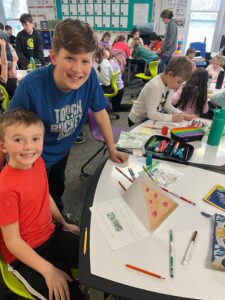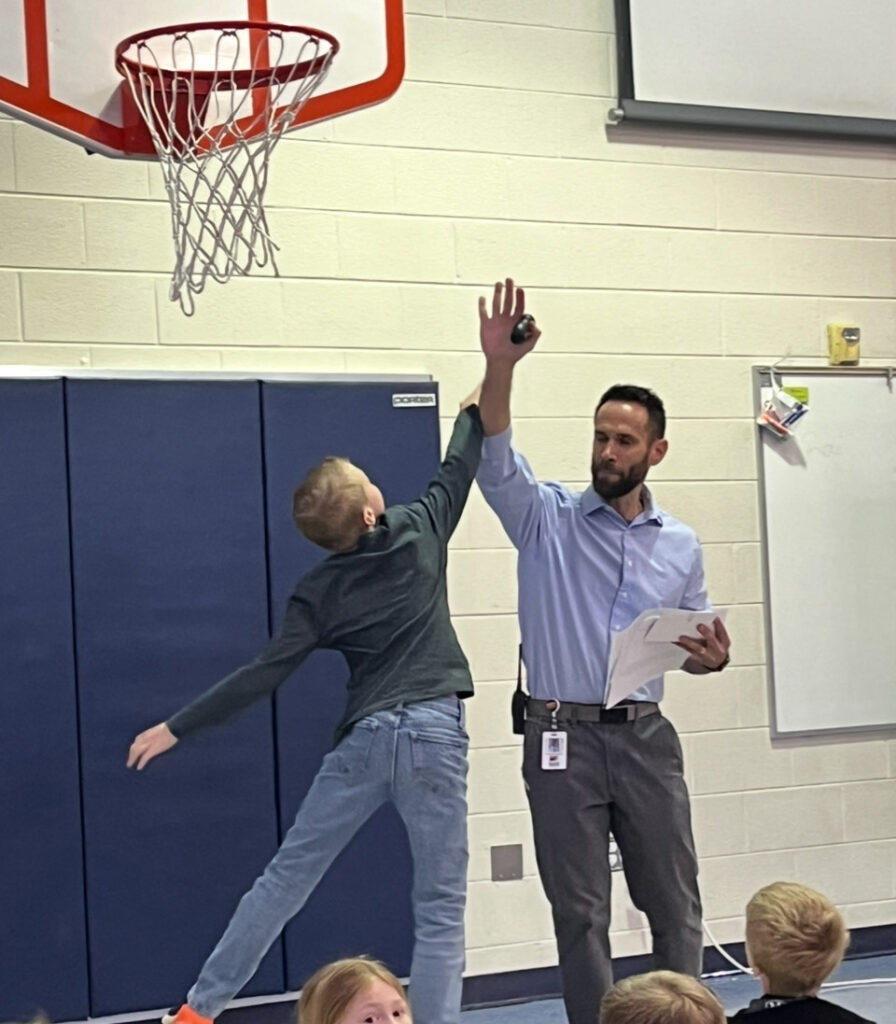How The Positivity Project Transformed Our School Culture and Boosted Achievement
By Mike DomagalskiIn December 2024, our leadership team at Palms Elementary set three ambitious goals: to improve our school community and culture, invest in student character building and behaviors, and have a more intentional focus on academics & state testing with the goal of increasing state test scores by 10% in each grade level. We knew these weren’t just slogans or numbers—we were determined to make real, meaningful changes that would impact both academic performance and the daily experiences of our students, staff, and families.
As January 2025 approached, we were ready to roll out a series of initiatives to help reach those goals. Among them were efforts like data analysis protocols, light instructional rounds, class buddy partnerships, and focused assemblies addressing our goals. However, the most impactful change we implemented—the heart of our transformation—was introducing The Positivity Project (P2).

Introducing The Positivity Project
The Positivity Project is built on the foundation of character strength development, anchored in the belief that relationships are the cornerstone of a strong community. What initially drew us in was the “Other People Mindset.” We wanted to shift our culture to one that elevated character as a daily focus, not just a poster on the wall or a once-a-month lesson. P2 gave us a clear and practical way to do that on a consistent basis so that we could tie everything to it as opposed to making it “just another thing we do.”
 Multiple times per week, teachers facilitated engaging, ready-to-use P2 slide decks in their classrooms. A main slide showcasing the weekly character strength was posted in our cafeteria and served as a visual cue during lunch. At the start of each morning, our announcements led with a message tied to the character strength of the week, allowing students and staff to start each day with a shared, positive focus.
Multiple times per week, teachers facilitated engaging, ready-to-use P2 slide decks in their classrooms. A main slide showcasing the weekly character strength was posted in our cafeteria and served as a visual cue during lunch. At the start of each morning, our announcements led with a message tied to the character strength of the week, allowing students and staff to start each day with a shared, positive focus.
To celebrate and reinforce the learning, we tied our Student of the Month recognition to The Positivity Project character strengths. One student per classroom was chosen based on their demonstration of the highlighted strength. We also began recognizing one staff member each month who embodied those same principles, fostering a culture of appreciation and shared values. These started to make the ownership of learning together personal to our students, teachers, and staff alike.
What we began to notice was nothing short of remarkable.
Visible Impact: Culture, Behavior, and Achievement
Around two months into this implementation, we noticed that our student discipline referrals started to decrease. There were less behaviors that warranted a documented discipline action because the behaviors were met with more connected conversation and an ownership of the behavior by the students.
Ultimately, the tone of conversations among students shifted—they began using the P2 vocabulary to reflect on their behavior, support their peers, and even resolve conflicts more maturely. Teachers noticed stronger classroom communities and a greater sense of ownership and pride in student behavior and academic effort.
Perhaps the most measurable and exciting outcome was the increase in our academic performance. Nearly every state assessment we tracked showed more than a 10% gain in student achievement. In some cases, grade levels saw gains as high as 20%.
 While we credit several of our new initiatives, it became clear that the mindset shift from P2 was a key driver. When students began to internalize the message that “my effort and attitude impact others,” they started to care more—not just about themselves, but about their classroom community and school as a whole.
While we credit several of our new initiatives, it became clear that the mindset shift from P2 was a key driver. When students began to internalize the message that “my effort and attitude impact others,” they started to care more—not just about themselves, but about their classroom community and school as a whole.
One of the most rewarding signs of success was hearing students use character strengths in their everyday language. Whether it was perseverance during a tough math test, gratitude toward a friend, or teamwork during recess, the language and lessons of P2 were living in our halls, not just our lesson plans. Adults in the building—teachers, aides, secretaries, custodians—noticed it too.
There was a renewed sense of unity, ownership, and positivity.
Simplicity that Drove Sustainability
What made The Positivity Project even more effective was how easy it was for staff to implement. The time commitment was minimal—just 10-15 minutes a day—and the materials were engaging and turnkey. It didn’t feel like “one more thing.” Instead, it became the thing that anchored our school day with purpose.
Whole-child development has always been at the center of what we believe in at Palms Elementary. The Positivity Project gave us a simple yet powerful way to live that belief out loud, every single day. It helped us meet our academic goals, yes—but more importantly, it gave our school community a collective identity rooted in empathy, kindness, and mutual respect.
If you’re looking for a meaningful way to build character, boost achievement, and create a school-wide sense of pride and ownership, I can say confidently: The Positivity Project works. And we’re just getting started.



